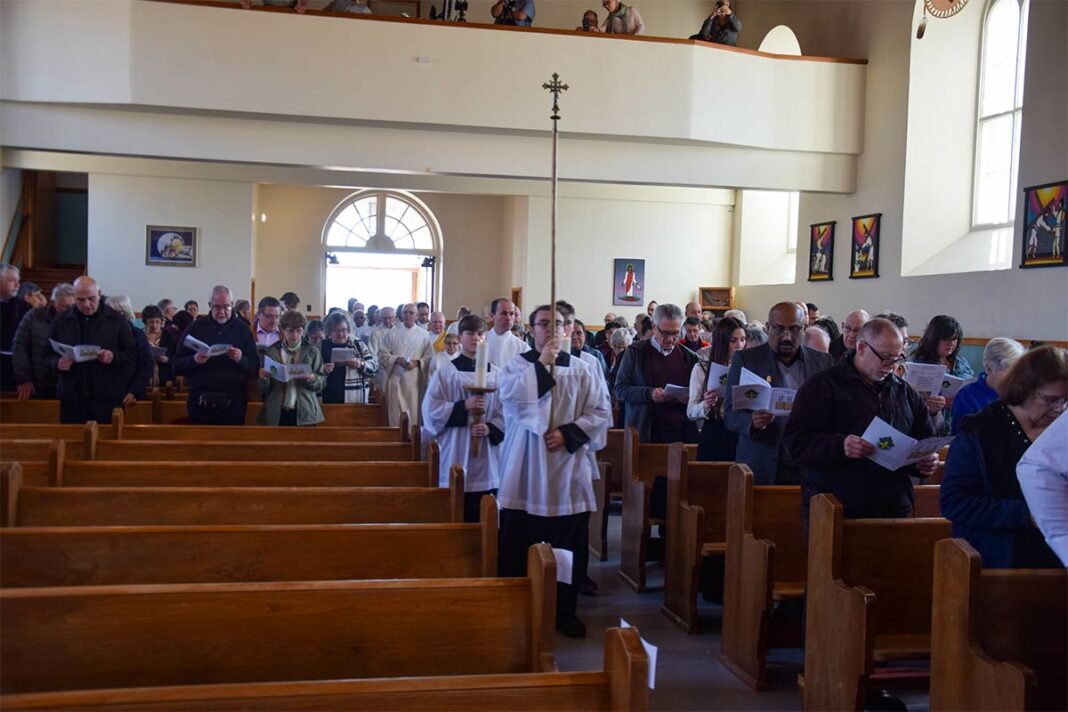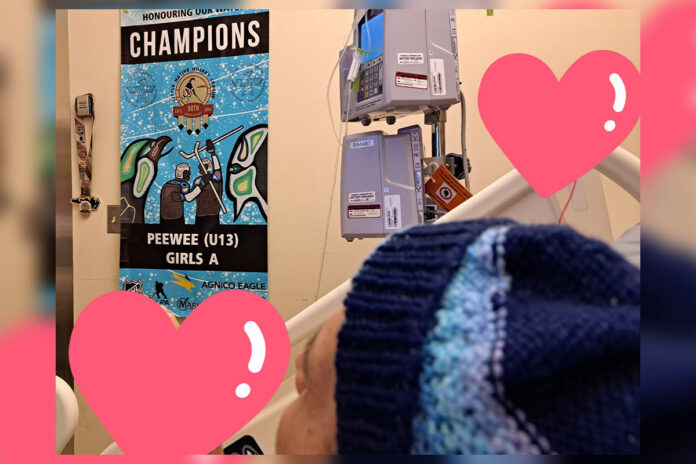WIIKWEMKOONG—Holy Cross Church is celebrating 150 years of service to the Wiikwemkoong community this year and Bishop Thomas Dowd, head of the Roman Catholic Diocese of Sault Ste. Marie and a self-confessed history buff, decided that called for something special to celebrate.
Each year, the diocese holds a special mass to bless the three holy oils used for anointing during the sacraments of the church. Of those three oils, the oil of the sick, the oil of the catechumens and the holy chrism oil, the first two are simply blessed, but the latter and most “important,” the chrism oil, must be consecrated by a bishop. It was his hope that this year, following consultation with the pastor and the Holy Cross parish council, that mass would be held in Wiikwemkoong.
Bishop Dowd explained that Holy Cross (long known as the Mother of Missions) is the oldest church in the North and that, as each new parish descends from a parent church, it could be described as the mother or ancestor of every parish in the North.
“This was the largest faith community in the North when the first bishop, Jean Francois Jamot, came North and made it his base,” shared the bishop. He noted that once the locks were being built at Sault Ste. Marie, Bishop Jamot decamped to that community as it was more centrally located to the western communities he also served.
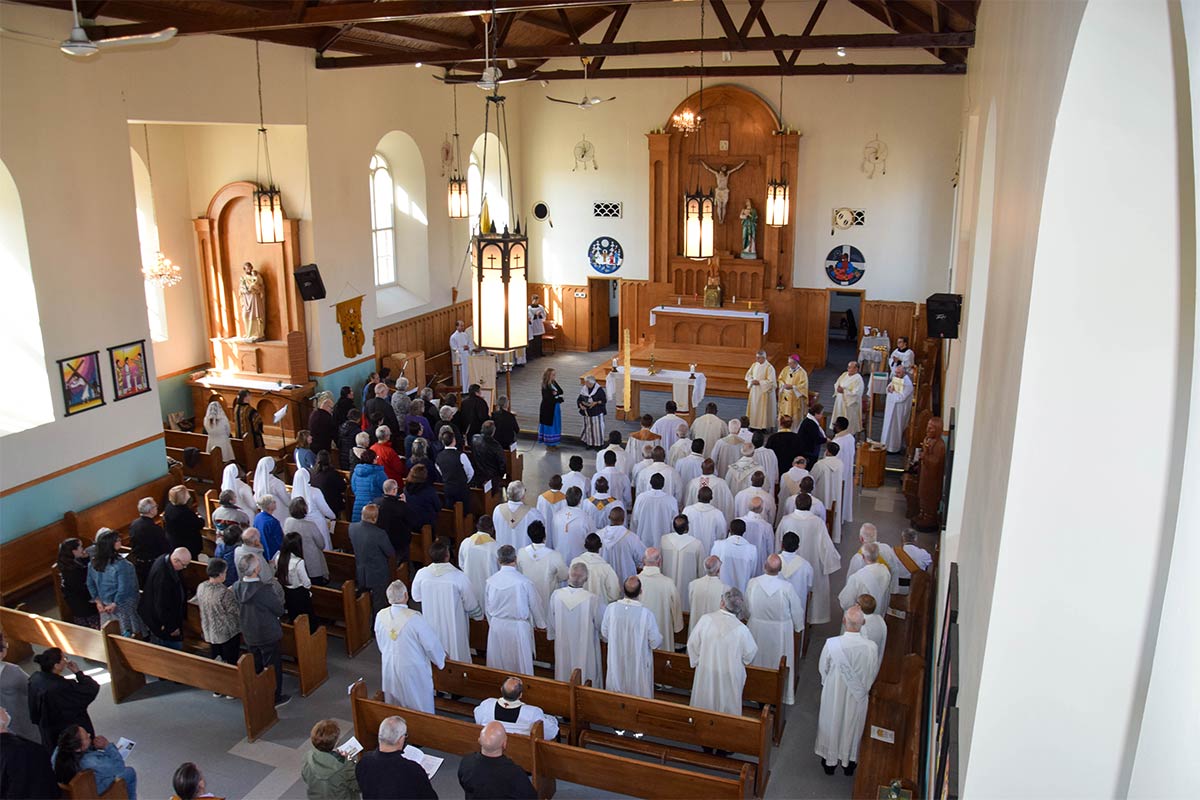
The Chrism Mass, as it is known, attracts nearly all the priests in the diocese as well as a representative from each parish. So, it came to be that nearly 60 priests decked in the full regalia of their offices, filled many of the Holy Cross pews last Wednesday where they were joined by parish representatives and members of the Wiikwemkoong community.
Prior to the Chrism Mass, the priest attended St. Bernard’s Church in Little Current for a memorial mass for Father George Gardner, who was the pastor there for the past 17 years. Throughout their stay on Manitoulin, the priests took part in meetings at the Manitoulin Hotel and Conference Centre in Little Current.
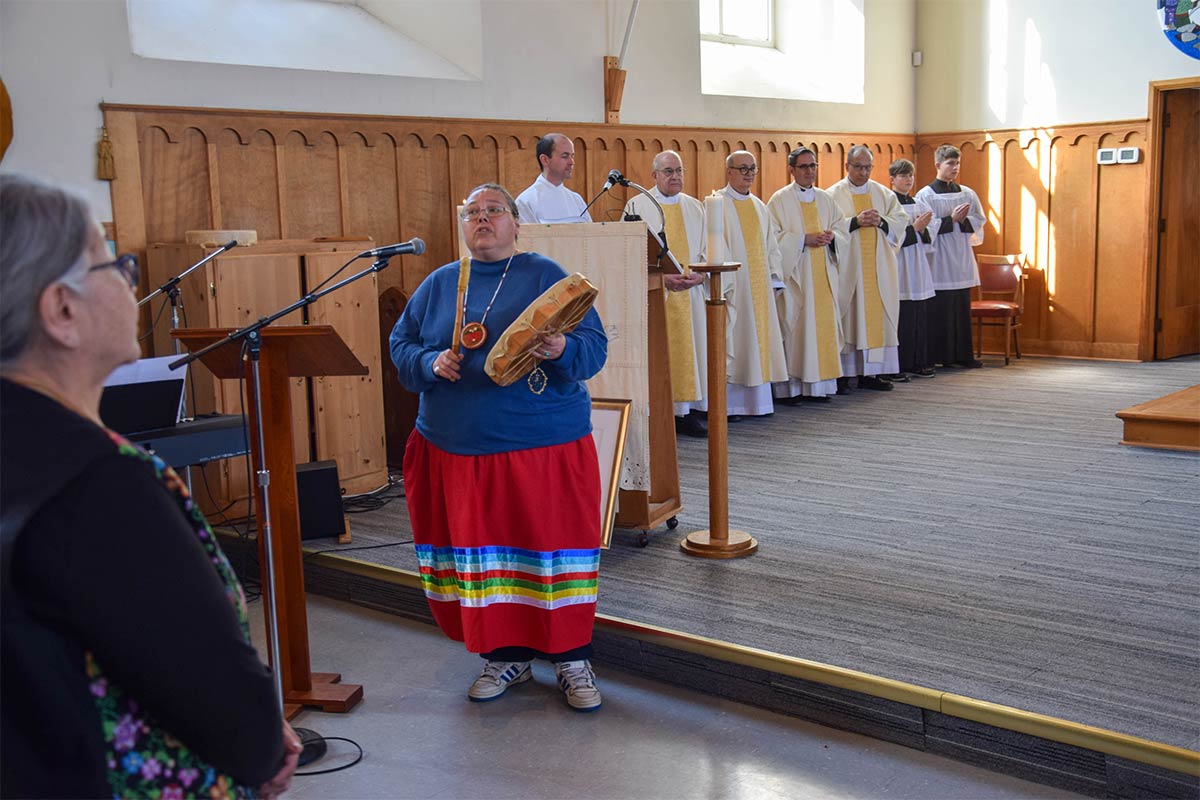
The parish delegates and priests boarded waiting buses in Little Current at the NEMI Rec Centre and the hotel for the trip to Wiikwemkoong, which for many was the highlight of their first visit to the Island, while for others represented a welcome trip back. Those familiar with Manitoulin could be heard relating its history and significance to their companions.
The buses stopped at Wiikwemkoong’s Wasse Abin High School where their passengers assembled in the school gymnasium to hear presentations from Wiikwemkoong elders and knowledge keepers about the history of their community, drumming and dance demonstrations (including intertribal dances in which most of those assembled took part in with enthusiasm—egged on by the bishop himself).
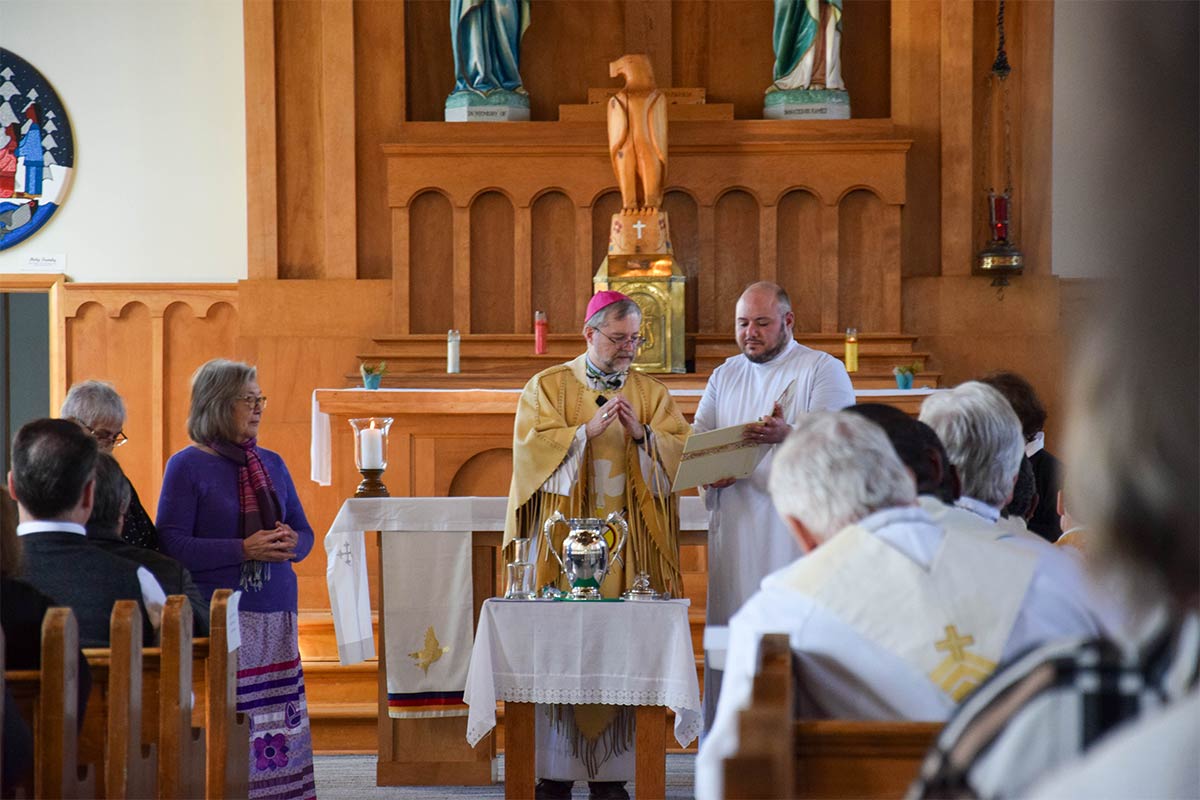
“If the bishop can dance, you can dance,” he exhorted. It didn’t really take all that much inducement, however, and soon nearly everyone was taking part.
The presentations began with welcoming remarks by local parishioner Rosella Kinoshemeg and Bishop Dowd, before local knowledge keeper Stephen George took those in attendance through an “elevator pitch” version of the history of the community. “I have about half-an-hour or so to talk to you, but I could go on talking about this for days,” admitted Mr. George.
His presentation included photographs of the original church (destroyed by fire in the early part of the 20th Century) and many of the original buildings. Mr. George dispelled a common misconception about the ruins that stand beside Holy Cross Church. “People think it was a residential school,” he said. “It wasn’t.” He explained that although there was a girls’ residential school in the community, it was located elsewhere and moved to Spanish when it later burnt down.
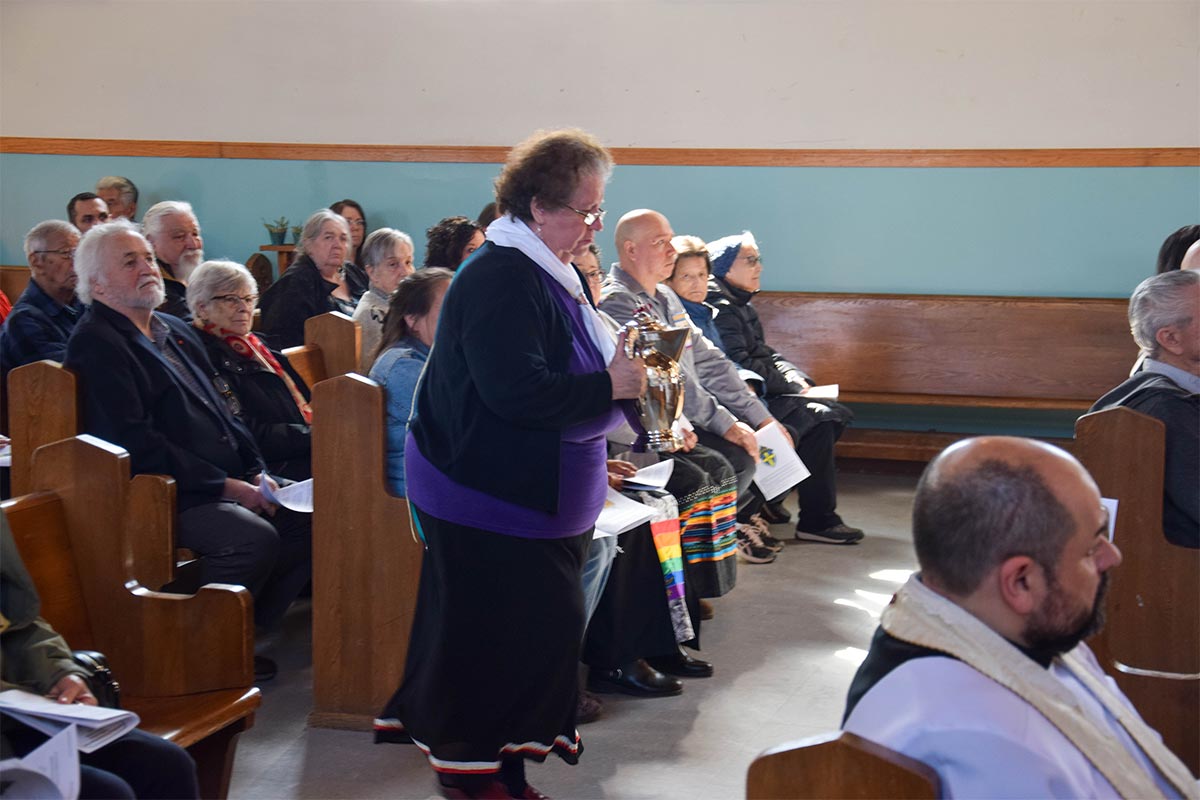
Following the dance demonstrations and presentations, a light lunch from Prepped Manitoulin was served before those attending reboarded buses for the trip down the hill to Holy Cross.
The Chrism Mass itself began with a procession of priests and other clergy into the church in full vestments—including the Jesuit Father Superior, recognizable by his traditional black robes. The procession was led by the youth altar server bearing a cross-mounted staff.
The rites were conducted in Anishinaabemowin, English and French, the latter of which would have been more commonly heard than English in the earliest days of the community. The Anishinaabe were closely allied for centuries with the French during their struggles with the English before allying with the British rather than the Americans in the later War of 1812.
Ms. Kinoshemeg conducted a purification rite (commonly called “smudging”) using the four sacred medicines (cedar, sage, sweetgrass and tobacco) of the Anishinabek at the beginning of the mass.
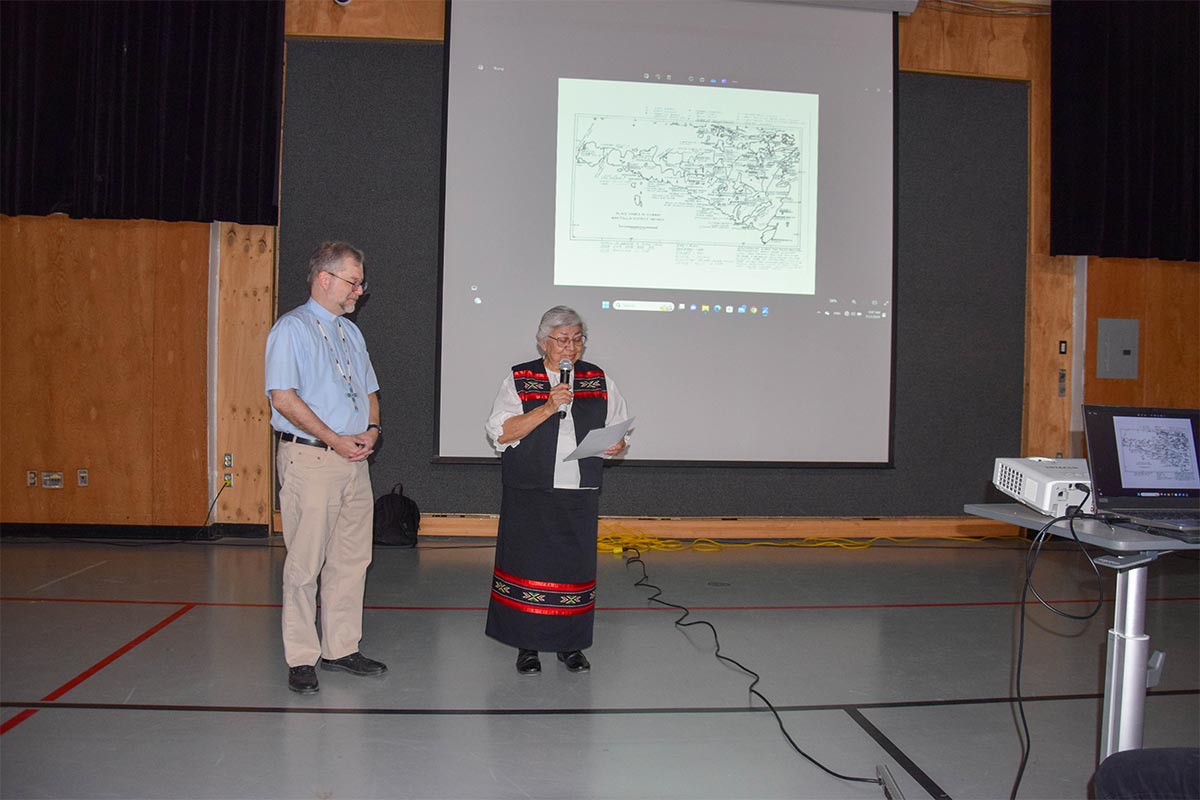
Bishop Dowd explained that the three oils that are at the centre of the mass are always plant-based (“no 10-W-30,” he quipped) and therefore must be replaced each year lest they go rancid. One of the aspects of this Chrism Mass that makes it “historic” is that the chrism oil, the most important of the three oils consecrated in the mass, is usually scented with balsam—a Middle Eastern plant. Instead, the new chrism oil was being scented with cedar, one of the four medicines sacred to the Anshinabe.
The mass was filled with song rising to the heavens—thanks in part to the bishop’s request that parishes send delegates with strong voices. In the end, that request was proven to be inspired. Bishop Dowd took a few moments at the beginning of the mass to practice some of the sung responses with those attending.
The oils and bowls containing the sacred medicines were processed to the altar by designated bearers and prepared before the gathering by the bishop and his acolytes. Following the mass, delegates gathered at the Daystar building to collect their three bottles to take back to their respective parishes.
Participants then reboarded buses for the trip to the Wiikwemkoong Arena, where a feast, sponsored by the chief and council, was held. A giveaway at the end of the evening consisted of a handmade wooden rosary and accompanying “chat” verse consisting of the nine final words of Jesus Christ on the cross.

